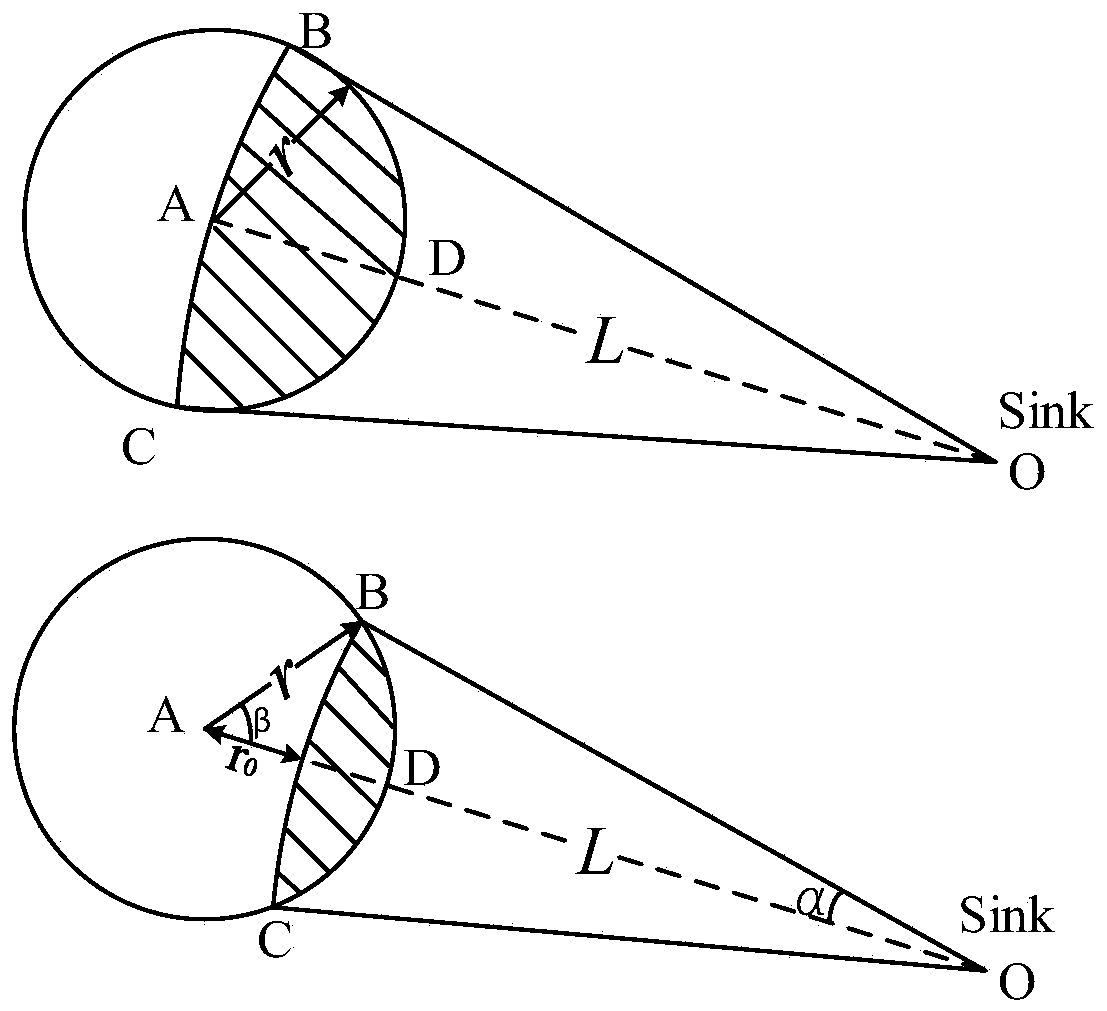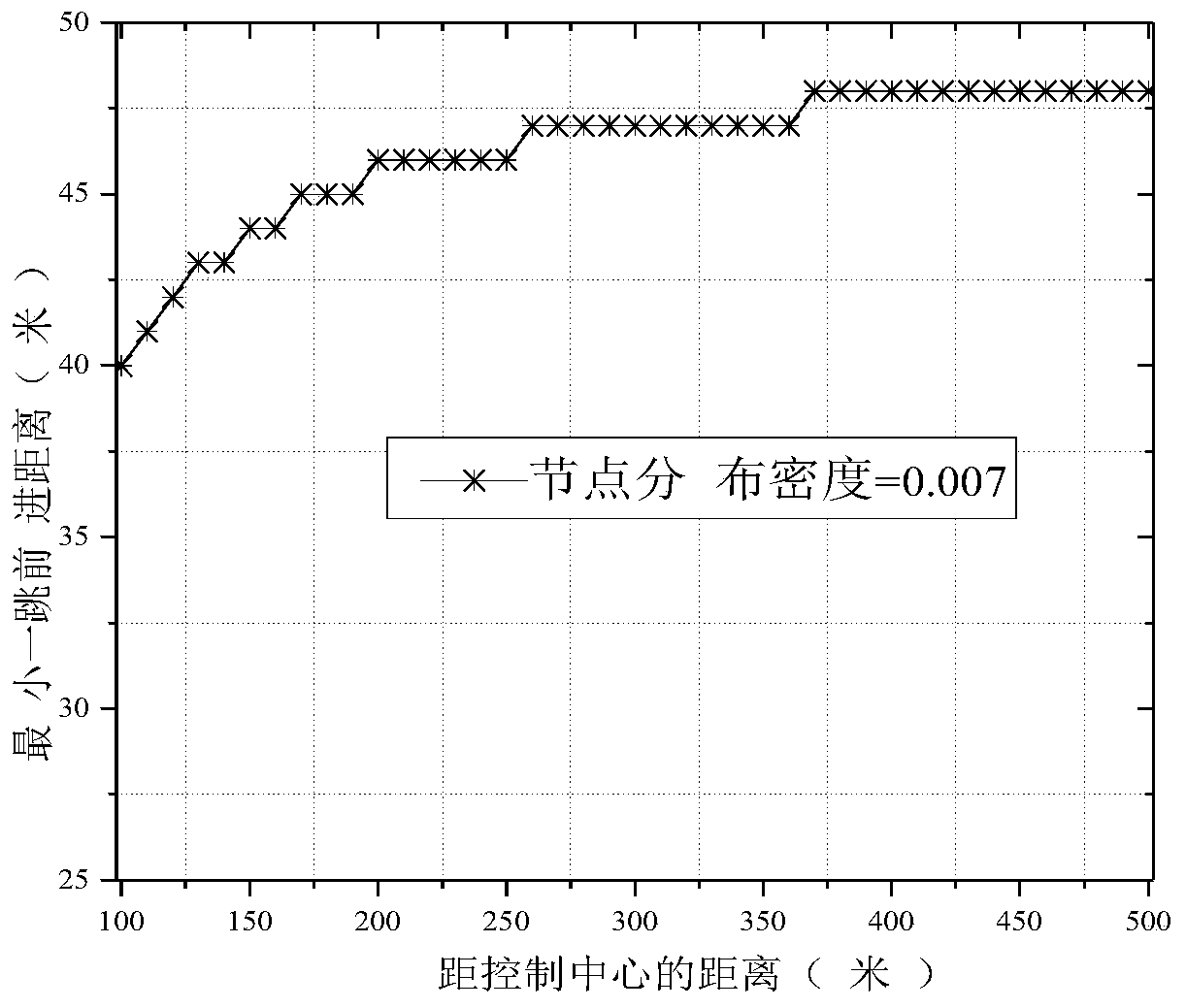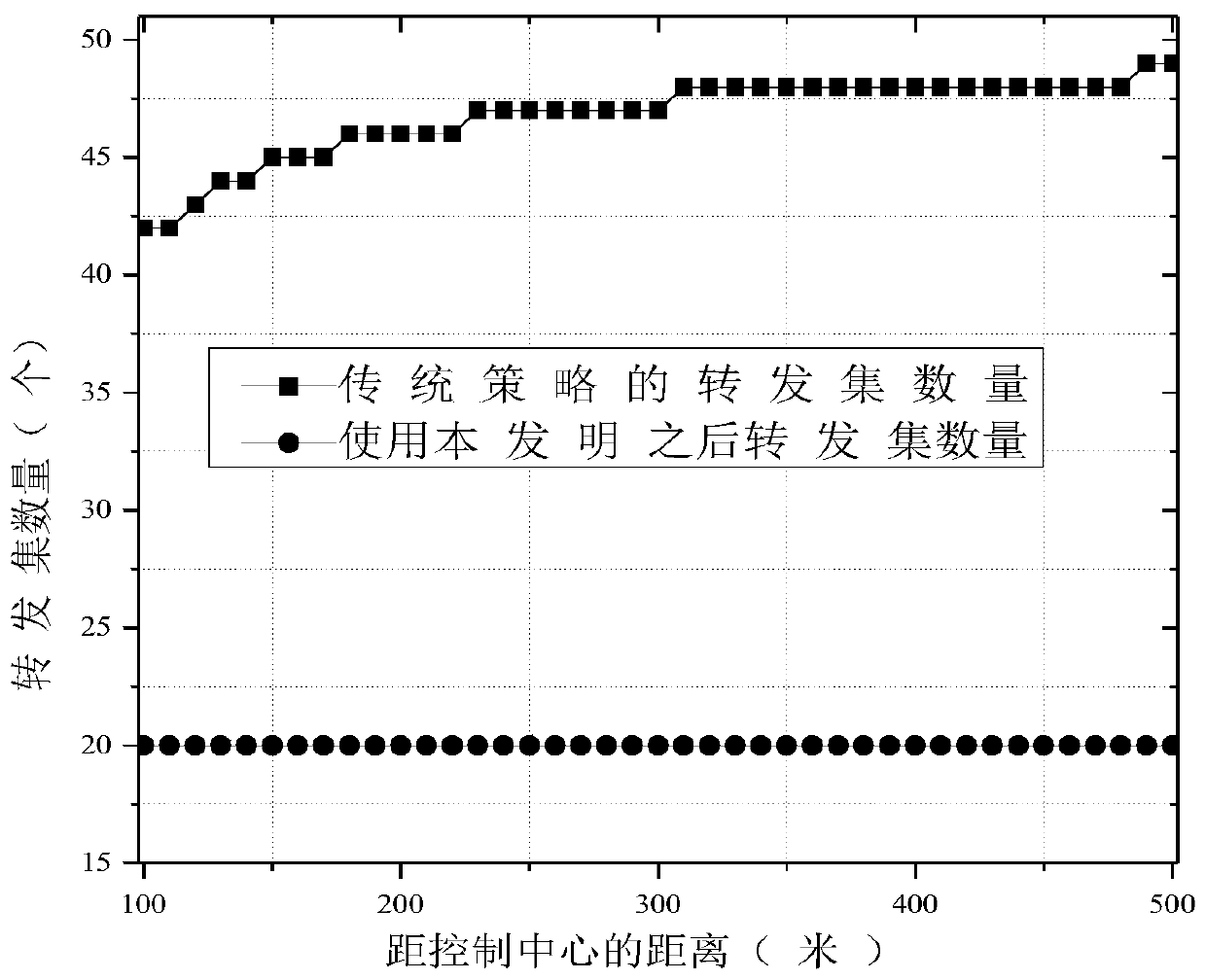A method of reducing latency and energy consumption in a dense wireless sensor network
A wireless sensor and network technology, applied in the direction of network topology, wireless communication, energy consumption reduction, etc., can solve the problems of limited node energy, high replacement cost, and inability to replace batteries
- Summary
- Abstract
- Description
- Claims
- Application Information
AI Technical Summary
Problems solved by technology
Method used
Image
Examples
Embodiment Construction
[0033] The present invention will be further described below in conjunction with the accompanying drawings and embodiments.
[0034] A method for reducing delay and energy consumption in a dense wireless sensor network. In a dense wireless sensor network, set the minimum one-hop forward distance and limit the number of sender forwarding sets to reduce delay and energy consumption. Such as figure 1 As shown in , after setting r 0 After that, the area of the forwarding set is reduced.
[0035] The method of using the present invention to obtain the minimum one-hop distance is when r 0 When traversing from 0 to r, make the following formula obtain the minimum value.
[0036]
[0037] in, Is a hop delay, that is, the sender successfully transmits the delay of the data packet to the relay node, and τ is the reciprocal of the duty cycle, that is, the cycle length / active time. In the present invention, the active time length of the node is determined as A time slot, τ is t...
PUM
 Login to View More
Login to View More Abstract
Description
Claims
Application Information
 Login to View More
Login to View More - R&D
- Intellectual Property
- Life Sciences
- Materials
- Tech Scout
- Unparalleled Data Quality
- Higher Quality Content
- 60% Fewer Hallucinations
Browse by: Latest US Patents, China's latest patents, Technical Efficacy Thesaurus, Application Domain, Technology Topic, Popular Technical Reports.
© 2025 PatSnap. All rights reserved.Legal|Privacy policy|Modern Slavery Act Transparency Statement|Sitemap|About US| Contact US: help@patsnap.com



